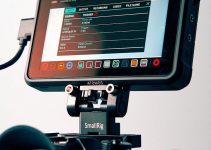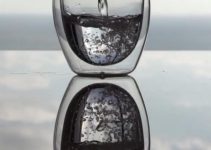LUTs are a powerful color grading asset. They can get you from point A to point B with minimal effort and outstanding reliability.
Even if you don’t want to use them for your main grade, they can be an invaluable part of most workflows since they can give you a decent preview on set or in post. And, if you didn’t know, there are actually different types of 3D LUTs – 17grid, 33grid, and 65grid. What’s the difference?
Filmmaker Carlos Quintero takes on this question, which many people probably have never asked. If you are looking to start making your own LUTs or simply want to better understand how they work you should start learning what these differences actually mean.
LUTs, or Look-Up Tables, are a very simple tool in practice. They tell the software how to take original footage and apply a grade to the footage to give it a distinct look.
It does this by translating expected color and luminance values to a new image. Most commonly, LUTs are used to take log or flat images and add contrast or saturation to make them look “right.”
Within LUTs there are 1D and 3D LUTs – those differences are for another video. Most filmmakers will be using the more common 3D LUT which is found in .cube files.
3D LUTs are available in the aforementioned 17grid, 33grid, and 65grid variants. What do those mean? At their simplest, it is the level of detail. In order from good to best you are looking at 17, 33, 65. Makes some sense.
Since LUTs aren’t smart – they don’t know what they are looking at – they are making fairly broad changes. That is how they take the expected look of log images and convert them into something like Rec.709.
17grid 3D LUTs basically just take an expected starting point and converts it to a fixed endpoint. For more limited footage like 8-bit log, this is a viable option. 33grid options begin to add more specific instructions to make sure the changes are more accurate.
This is what you should be considering using for production monitors on set. However, it still isn’t perfect because it doesn’t have a complete set of information on gradients in the midtones. It might nail the top and bottom end, but the middle is important.
Applying similar corrections with a 65grid 3D LUT uses even more points to do the conversion and appears to provide more accurate results in Quintero’s tests.
So, in summary, the difference between the 17, 33, and 65grid versions is how many information points they use to determine how to make their conversions, which are really just guesses.
The more you have the more reliable the conversion will be, but you don’t always need that level of detail depending on your footage.
If you are looking to create your own LUTs using software like DaVinci Resolve this is useful information and can explain what you are getting with the options presented to you.
[source: Carlos Quintero]
Disclaimer: As an Amazon Associate partner and participant in B&H and Adorama Affiliate programmes, we earn a small comission from each purchase made through the affiliate links listed above at no additional cost to you.
Claim your copy of DAVINCI RESOLVE - SIMPLIFIED COURSE. Get Instant Access!





